Bodybuilding
Split Training System
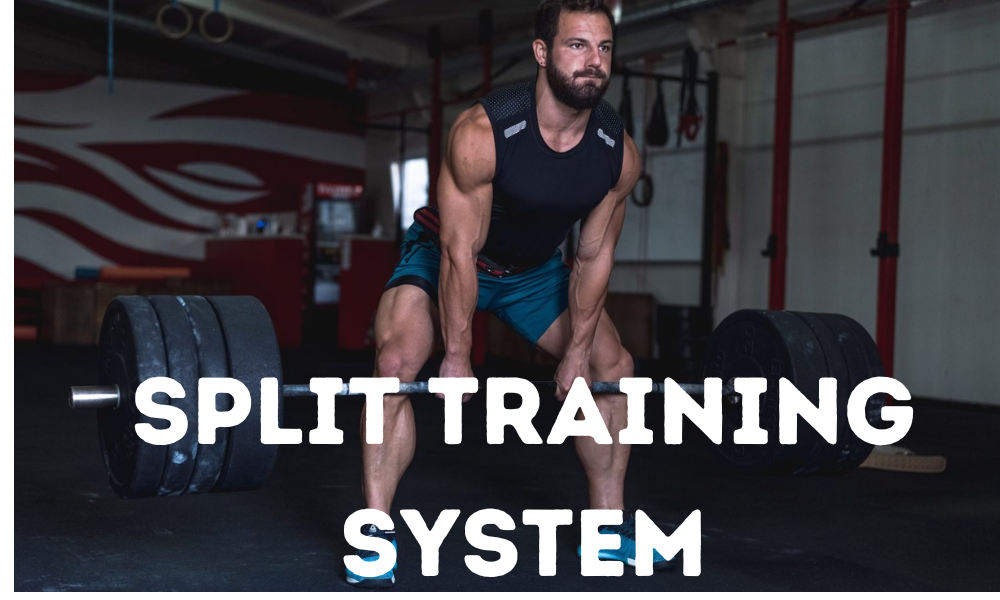
)Split Training System is a popular training system used by bodybuilders to gain muscle mass and strength. It involves splitting the body into different parts and focusing on one part at a time. This allows the bodybuilder to focus on specific muscles while also allowing them to rest other muscles in between workouts.
Benefits of the Split Training System
Split Training System is especially beneficial for those looking to increase their strength or size quickly, as it allows them to target each muscle group more intensely than traditional training systems. Additionally, this system can help prevent injuries and maximize results by allowing for more targeted workouts.
Split Training System has several advantages building strength and muscle mass, preventing injuries, and maximizing results. The disadvantages of this training system are that it can be more challenging to recover from intense workouts and isn’t as effective for those looking to increase flexibility or endurance.
Why the System Was Introduced
Joe Weider first developed the Split Training System in the 1950s. They wanted to create an effective way for bodybuilders to train their muscles efficiently. Since then, the system has been adapted and refined by various trainers, resulting in the system we know today.
The Split Training System is now used by bodybuilders worldwide and is considered one of the most effective ways to build muscle mass quickly and safely.
In recent years, the training system has been adapted by powerlifters who have found that it can be modified to work well for them. CrossFit athletes have also adopted the approach, who believe it is a good base for their training. Let us discuss some key concepts in the Split Training System and how they may apply to powerlifting.
Lower Body Vs. Upper Body Workouts
The Difference Between Lower-Body and Upper-Body WorkoutsAs mentioned above, a critical aspect of using a split training system is identifying which muscles should be targeted in each workout. Essentially, there are 2 "categories" of muscles based on the anatomical region.
The lower body and the upper body. Since powerlifting primarily targets the muscles in the upper body, a split training system is not necessarily applicable to this sport.
The lower body consists of the legs, hips, and buttocks muscles.SquatDeadliftBench PressMilitary pressClose grip bench press/dumbbell shoulder pressHack squat /back squatSplit by training system: Body-part splitPowerlifting-style splitHigh volume/high-intensity split.
The Need to Train All Muscle Groups
The split training system came when bodybuilders stopped training all muscle groups in one training day and began to work out individual muscle groups on different training days. Initially, the split system implies two workouts per muscle group for one week, with a 4-day, 5-day, or 6-day training cycle.
In other words, each muscle group worked two times a week, and the number of workouts per week was 4, 5, or 6. Here, the separation of muscle groups to work out different training days could be made with many options and policies.
In the most basic version of the split system, muscle groups should split into two parts and train four times a week. The recommended version of the workouts during the week were the following days: Monday-Thursday and Tuesday-Friday.
Large muscle groups trained two times a week, and the small group of muscles (stomach, calves, forearms) could even be worked through each workout, namely 4 times a week. Separation of muscle groups in the split system is usually done on a "push-pull" principle.
For Example
- "Push" is about the groups that perform traction movement, such as back, biceps;
- “Pull” is about the group of muscles, which are the basic movements of the presses, such as chest, delts, and triceps.
The approximate separation of muscle groups in the 4-day cycle for the average level of fitness was as follows:
Scenario 1
-Monday-Thursday working on stomach, breast, delta, triceps, forearms, and eggs;
-Tuesday-Friday working on belly, legs, back, biceps, forearms, and calves.
Scenario 2
The separation could also be done on a "trunk limb":
-Monday-Thursday working on abdomen, chest, delta, back, and calves;
-Tuesday-Thursday working on stomach, legs, arms, and calves.
Scenario 3
Separation of muscle groups according to the split system can also be done freely, like this:
-Monday-Thursday -stomach, legs, lower back, chest, biceps, forearms, eggs.
-Tuesday-Friday-Stomach, lats, delts and trapezius muscles, triceps, forearms.
Scenario 4
The next step, confined to well-trained bodybuilders, was the program split into a five-day cycle, from Monday to Friday. As in the 4-day split, all the muscles were divided into two parts.
Each half trained on Monday, Wednesday, and Friday one week and Tuesday and Thursday next week. Thus, every major muscle group is trained five times for two weeks.
The five-day split is used mainly in a pre-competitive period for well-trained bodybuilders with at least two years of training experience.
For the best-trained bodybuilders, but only in the precompetitive period, it could also be used 6-day split. There were two versions of the 6-day split. The first is when every major muscle group is trained two times a week, and the second is about the situation when each group is trained three times a week. The second option was used only for a few weeks before the competition.
The body was divided into three parts for a less intensive six-day cycle.
For Example:
-Monday-Thursday- abdomen, chest, upper back, and calves;
-Tuesday-Friday-stomach, legs, lower back, and upper arm;
-Wednesday-Saturday- calves, biceps, triceps, and forearm;
Gradually, as a middle ground between the 5-day and 6-day cycles appear, a new, viral 4-day process, in which the body is divided into three parts, each being trained consistently for three days, and on day 4 is a break. Then the whole cycle repeats.
Many top bodybuilders used this cycle in the preparatory period, as it allows for better recovery between workouts for each muscle group, compared with a 5-day and 6-day Split.
4-Day Cycle Training
Separation of muscle groups during training in the new 4-day cycle would look like this:
a) On the first day -work the stomach, legs, biceps, and calves;
b) On the second day- work on calves, chest, delta, and abdomen;
c) On the third day, work the core, back, triceps, and forearms;
d) And the last, fourth day is the time for resting.
As you can see, the next step in the development of the split system is a 4-day cycle, or as it is called, three plus one cycles.
Drawbacks of Split Training System in Bodybuilding
Split Training System in bodybuilding is a famous workout routine amongst bodybuilders. It involves splitting the body into muscle groups and training each group on separate days. However, this system also has its drawbacks.
It can be time-consuming and may not be suitable for those who have limited time to work out or are beginners in bodybuilding. Furthermore, it can lead to overtraining of certain muscle groups while neglecting others which can cause imbalances in the body and potential injury.
So, what is a healthy amount of training? In general, the experts say that to reap 100% of the benefits of physical activity, you need to exercise at least 4-5 times per week. More flexibility in how often you can partake in physical activity will come with experience and your workload. If you want to stay healthy and exercise regularly, do not overdo it. Follow your body's natural rhythm for a healthy balance.
If you have an injury, know when to stop exercising. A common mistake people make is continuing to exercise with an injury that could worsen over time. This is dangerous and discouraging because it feels like the pain will never go away.
Be patient, and know your limits and your body's needs. If an injury worsens despite rest, consult a trainer or doctor for more information on proper treatment and care. Many other factors can affect your health, but these three tips are important for overall wellness and physical activity.
Overall
Split training is an effective way for bodybuilders to reach their goals. It allows them to focus on specific muscle groups and tailor their workouts to meet their needs. Split training also helps bodybuilders avoid overtraining, which can lead to injury and fatigue.
Additionally, split training can help bodybuilders build muscle faster and more efficiently than traditional full-body workouts.
By focusing on one muscle group at a time, bodybuilders can target the areas they want to work on without wasting energy or time on muscles that are already well-developed.
Split training is essential for any serious bodybuilder looking to achieve their goals quickly and safely. It allows you to use the best exercises for each muscle group in a way that works well with your body.
Bodybuilding is a structured, demanding sport that requires intense effort and consistency over long periods. It's important to note that you have little chance of success without training smart, including experimenting with different training split patterns.
Check out Our Training Program:: 18 Week Chin Up & Dip Program for An Impressive Upper Body
Bodybuilding
Mastering Bodybuilding in 2025: Top Fitness Tips for Success

Bodybuilding is more than just a sport; it's a lifestyle that requires dedication, discipline, and a thorough understanding of fitness principles. As the world of fitness continues to evolve, bodybuilders must stay updated with the latest trends, techniques, and scientific advancements to achieve their goals. In 2025, several innovative approaches are redefining bodybuilding. Here are essential fitness tips for bodybuilders to excel this year.
Read More: Bodybuilder Winter Clothing: Staying Warm and Stylish
Embrace Technology-Driven Workouts
In 2025, technology plays a significant role in bodybuilding. Wearable devices, fitness apps, and virtual reality (VR) training are now integral components of an effective workout regimen.
Wearable Devices
Modern wearables track everything from heart rate and sleep patterns to muscle activation and caloric expenditure. Utilize these devices to monitor your progress and make data-driven adjustments to your training and nutrition plans.
Fitness Apps
Leverage fitness apps for customized workout plans, progress tracking, and virtual coaching. Many apps now incorporate artificial intelligence to provide personalized feedback and recommendations.
Virtual Reality Training
VR technology offers immersive workout experiences, allowing bodybuilders to simulate different training environments and scenarios. This can enhance motivation and add variety to your routine.
Focus on Functional Strength
While hypertrophy (muscle growth) remains a primary goal, functional strength is gaining importance. Functional strength training improves overall performance, reduces the risk of injury, and enhances daily activities.
 Check Out Our1 4 Weeks Quality Strength & Lean Muscles
Check Out Our1 4 Weeks Quality Strength & Lean Muscles
Compound Movements
Incorporate compound exercises like squats, deadlifts, and bench presses. These movements engage multiple muscle groups and joints, promoting balanced strength development.
Core Stability
Prioritize exercises that strengthen the core, such as planks, Russian twists, and leg raises. A strong core supports better lifting mechanics and reduces the risk of lower back injuries.
Optimize Nutrition for Muscle Growth and Recovery
Nutrition is the cornerstone of successful bodybuilding. In 2025, the focus is on personalized nutrition plans tailored to individual needs and goals.
Protein Intake
Ensure adequate protein intake to support muscle repair and growth. Aim for 1.6 to 2.2 grams of protein per kilogram of body weight per day, depending on your training intensity and goals.
 Click Here to Buy SynthaTrope By SynthaPharma
Click Here to Buy SynthaTrope By SynthaPharma
Nutrient Timing
Pay attention to nutrient timing to maximize muscle recovery and growth. Consume protein and carbohydrates within 30 minutes post-workout to replenish glycogen stores and kickstart muscle repair.
Supplements
Utilize supplements wisely. Creatine, branched-chain amino acids (BCAAs), and omega-3 fatty acids are popular choices for enhancing performance and recovery.
Prioritize Mental Health and Mindfulness
Mental health is increasingly recognized as a critical component of overall fitness. Incorporating mindfulness practices can improve focus, reduce stress, and enhance performance.
Meditation
Incorporate meditation into your daily routine to reduce stress and improve mental clarity. Mindfulness meditation can enhance your mind-muscle connection during workouts.
Visualization
Use visualization techniques to mentally rehearse your workouts. Visualizing successful lifts and achieving your goals can boost confidence and motivation.
Rest and Recovery
Prioritize rest and recovery to prevent burnout and overtraining. Ensure you get 7-9 hours of sleep per night and incorporate rest days into your training schedule.
Leverage Advanced Training Techniques
Advanced training techniques can help break through plateaus and stimulate muscle growth. In 2025, several methods are gaining popularity among bodybuilders.
Blood Flow Restriction (BFR) Training: BFR involves restricting blood flow to the muscles during low-intensity exercises. This technique can enhance muscle growth and strength without the need for heavy weights.
Eccentric Training: Focus on the eccentric (lowering) phase of exercises. Eccentric training can stimulate greater muscle damage and growth compared to traditional concentric movements.
Periodization: Implement periodization into your training plan. Varying the intensity, volume, and type of exercises can prevent plateaus and ensure continuous progress.
Incorporate Recovery and Mobility Work
Recovery and mobility are essential for preventing injuries and maintaining optimal performance. In 2025, bodybuilders are paying more attention to these aspects of training.
Foam Rolling and Myofascial Release: Use foam rollers and massage balls to release muscle tightness and improve flexibility. Regular myofascial release can reduce soreness and enhance recovery.
Stretching: Incorporate dynamic stretching before workouts and static stretching after workouts. Stretching improves range of motion and prevents muscle imbalances.
Cryotherapy and Hydrotherapy: Explore recovery techniques like cryotherapy (cold therapy) and hydrotherapy (water therapy) to reduce inflammation and accelerate muscle recovery.
Engage in Continuous Learning and Community Building
The fitness industry is constantly evolving, and staying informed is crucial for success. Engage in continuous learning and connect with the bodybuilding community for support and motivation.
Educational Resources: Read books, watch videos, and attend seminars to stay updated on the latest research and trends in bodybuilding.
Community Engagement: Join online forums, social media groups, and local bodybuilding clubs. Sharing experiences and knowledge with fellow bodybuilders can provide valuable insights and encouragement.
Professional Guidance: Consider working with a certified personal trainer or coach. Professional guidance can help you optimize your training and nutrition plans, ensuring you're on the right track.
With your FB Plus subscription or active FB Plus Pass, you now have access to 124 weeks of our most popular workout programs, which typically sell for $10-$30 each. Additionally, our popular 4-week Meal Plan is included. This is on top of the 38 Challenges and Programs that are already available to Plus members.
We've also introduced a new feature that many of you have requested. To assist you in choosing your next program, you can now preview each day of any program from its detail view. This feature lets you see all the included workout videos and content before you schedule it, ensuring you know exactly what to expect.
Conclusion
In 2025, bodybuilding is more than just lifting weights; it's a holistic approach to fitness that encompasses technology, nutrition, mental health, and advanced training techniques. By embracing these fitness tips, bodybuilders can achieve their goals, stay injury-free, and enjoy a fulfilling fitness journey. Remember, consistency and dedication are key to success in bodybuilding. Stay committed, keep learning, and most importantly, have fun on your path to becoming the best version of yourself.
Bodybuilding
Top Video Games for Bodybuilders in 2025

There are several video games that can be great for bodybuilders, combining fitness and fun! Here are some of the best options:
Ring Fit Adventure (Nintendo Switch)
The game uses the Ring-Con and Leg Strap to guide you through various exercises and adventures. It's a fun way to get a full-body workout while playing a game.
Fitness Boxing 2: VR Boxing Remastered (PlayStation VR)
It offers a full-body boxing workout with a variety of punches and combos. It's a great way to improve your fitness while enjoying a virtual boxing experience.
Must Read: Marvel-Inspired Training Clothing on Amazon
Just Dance 2024
This popular dance game gets you moving to the beat with a variety of songs and dance routines. It's a fun way to burn calories and improve your coordination.
Zumba Fitness
Burn It Off (Nintendo Wii): This game offers a fun and energetic Zumba workout, perfect for those who enjoy dancing and want to get a good cardio workout.
Yoga for Beginners
If you're looking for a more relaxing workout, yoga games can help improve flexibility and reduce stress. Many of these games offer guided yoga sessions that you can follow along with.
Gym Tycoon
This game lets you build and manage your own gym, complete with various workout equipment and fitness classes. It's a great way to learn about different exercises and how to create effective workout routines.
The Sims 4: Fitness Stuff Pack
This expansion pack for The Sims 4 adds fitness equipment and activities to the game, allowing you to improve your character's fitness and join the athlete career.
Grand Theft Auto: San Andreas
While not a traditional fitness game, this classic game includes bodybuilding activities that can help your character gain muscle and improve fitness.
Knockout Home Fitness (Nintendo Switch)
This game offers a variety of boxing workouts that can help improve your strength and endurance.
Gym Simulator 24 (PC)
In this simulation game, you can build and manage your own fitness empire, creating workout routines and managing gym equipment.
Let's Get Fit (Nintendo Switch)
This game focuses on pure workouts, allowing you to set programs and follow along with digital trainers for a customized fitness experience.
Beat Saber (VR)
A popular VR game where you slash blocks to the beat of the music, providing an intense full-body workout.
Synth Riders (PlayStation VR)
This game combines freestyle dance and fitness, offering high-tempo tracks and multiplayer modes for a fun and energetic workout.
Yoga Master (PlayStation)
Designed by professional yoga coaches, this game offers a variety of yoga lessons and poses to improve flexibility and reduce stress.
Les Mills Bodycombat (PlayStation VR)
A martial arts-inspired workout game with a range of workout plans and coaching to keep you motivated.
OhShape Ultimate (PlayStation VR)
This game provides a full-body cardio workout with six sessions and two difficulty levels, designed to engage every part of your body.
These games offer a mix of cardio, strength, and flexibility workouts, making them great additions to your fitness routine.
Related Article: Supplemental Breast Milk for Bodybuilders
Bodybuilding
2nd Edition of Natural Bodybuilding Competition Facts
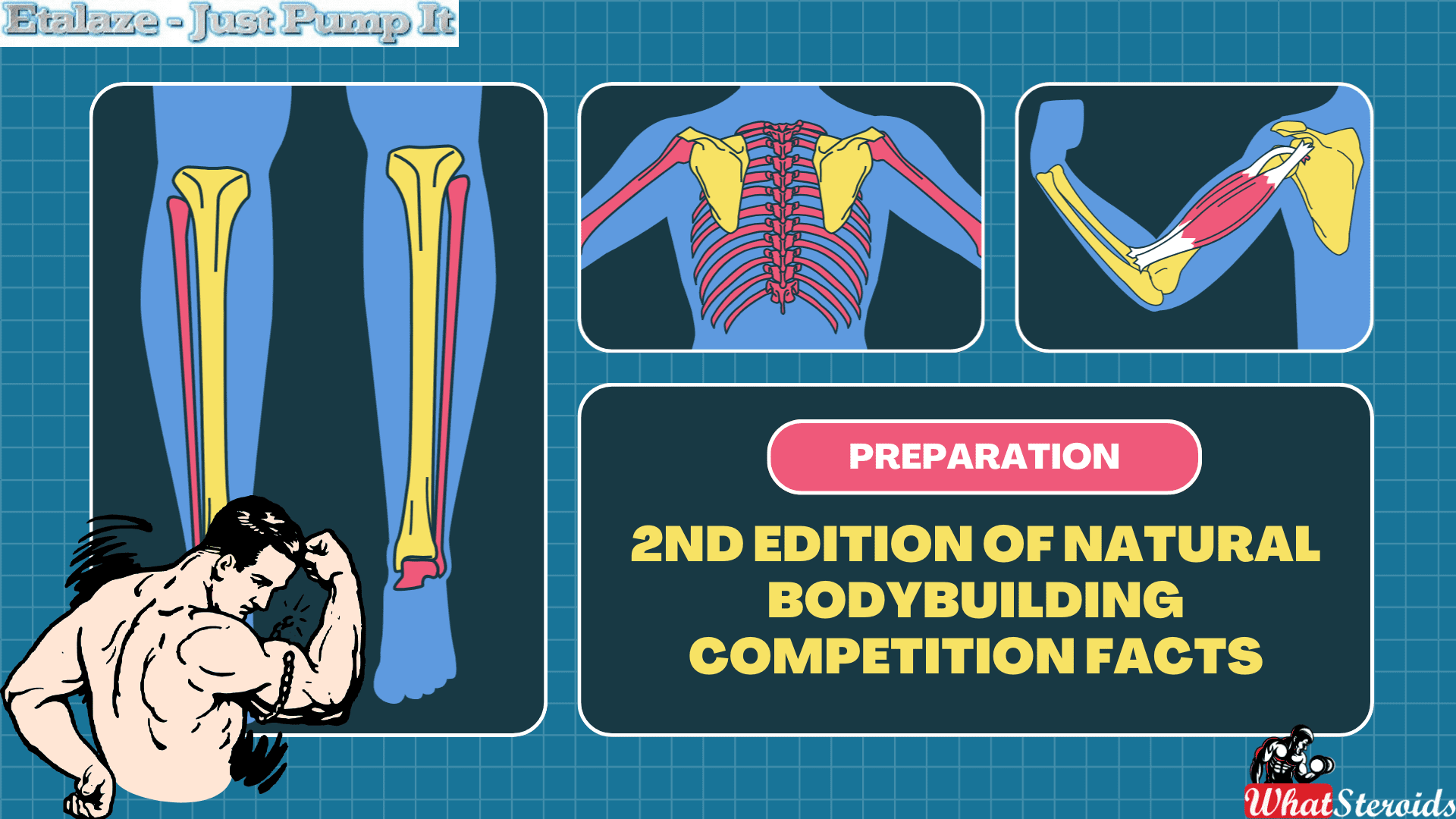
Natural bodybuilding competitions are designed to promote and celebrate athletes who build their physiques without the use of performance-enhancing drugs. These events emphasize fair play, health, and the natural development of muscle mass and definition.
The second edition of natural bodybuilding competitions has gained momentum globally, particularly focusing on drug-free athletes. These competitions are hosted by various organizations like the INBA/PNBA (International Natural Bodybuilding Association/Professional Natural Bodybuilding Association) and OCB (Organization of Competitive Bodybuilders).
In 2024, several notable events have been planned, including the INBA Natural Universe and INBA World Cup, both of which emphasize natural bodybuilding through rigorous drug testing policies. These events aim to showcase competitors who adhere to strict drug-free protocols, and winners often earn pro cards allowing them to compete in higher-level professional competitions.
These competitions focus on categories like men's bodybuilding, classic physique, and women's figure and bikini, among others. Athletes undergo polygraph and urine tests to ensure compliance with natural bodybuilding standards. The winners often receive medals, trophies, or pro status
-

 Steroids2 years ago
Steroids2 years agoVOX Testing: Why Bodybuilders Must Have It Tested Regularly
-

 Steroids2 years ago
Steroids2 years agoShavers and Other Body Grooming Equipment for Bodybuilders In 2023
-

 Steroids2 years ago
Steroids2 years agoChatGPT and Other Avenues to Find Great Bodybuilding Coaches
-

 Steroids2 years ago
Steroids2 years agoBest Oil Recommendations Before Competition for Subtle Shimmer
-

 Steroids2 years ago
Steroids2 years agoPowerlifting Vs Power Building: Find Out the Big Difference and When to Shift Between the Two
-

 Nutrition1 year ago
Nutrition1 year agoEverything Nutritional Food: What’s Too Much Or Too Little
-

 Bodybuilding Products12 months ago
Bodybuilding Products12 months agoTelmisartan In Bodybuilding: An Expert’s Advice
-

 Anabolic Steroids1 year ago
Anabolic Steroids1 year agoLegality of Anabolic Steroids In Latin America
-

 Beginners2 years ago
Beginners2 years agoTren Cycle for Beginners
-

 Bodybuilding1 year ago
Bodybuilding1 year agoList of FDA-Approved Peptides
-

 Bodybuilding2 years ago
Bodybuilding2 years agoCompetition Prep Cycle for Pro Bodybuilders
-

 Bodybuilding1 year ago
Bodybuilding1 year agoChia Seeds in A Bodybuilder’s Diet: An Expert’s Advice
-

 Anabolic Steroids11 months ago
Anabolic Steroids11 months agoHow Much Do You Know About B-AET? A Fat Burner You’ve Been Missing
-

 Bodybuilding7 months ago
Bodybuilding7 months agoPrimal Movements: Our Ultimate Guide for Maximum Results
-

 Steroids11 months ago
Steroids11 months agoAnadrol Cycle: Benefits, Doses, Alternatives, etc.
-

 Anabolic Steroids8 months ago
Anabolic Steroids8 months agoJoint Stiffness: How to Manage It While on AAS
-

 Product Reviews10 months ago
Product Reviews10 months agoTop Vitamins for Skin Health
-

 Steroids9 months ago
Steroids9 months agoOmnitope (Oxytocin)
-

 Bodybuilding1 year ago
Bodybuilding1 year agoHow Much Is Too Much Cardio? Understanding Heart Rate Zones
-

 Bodybuilding8 months ago
Bodybuilding8 months agoHow Effective is Bone Broth for Recovery?
-

 Steroids10 months ago
Steroids10 months agoMajor Bodybuilding Peptides Explained
-
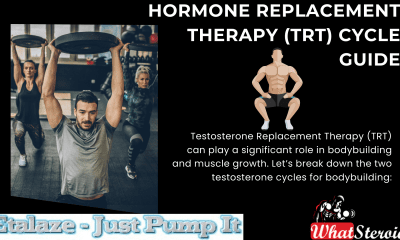
 Bodybuilding9 months ago
Bodybuilding9 months agoHormone Replacement Therapy (TRT) Cycle Guide
-

 Steroids8 months ago
Steroids8 months agoSleeping Positions for Effective Muscle Recovery
-

 Anabolic Steroids1 year ago
Anabolic Steroids1 year agoStart The New Year Strong With These Tips
-

 Bodybuilding10 months ago
Bodybuilding10 months agoHere Is How To know Your MRV (Maximum Recoverable Volume)












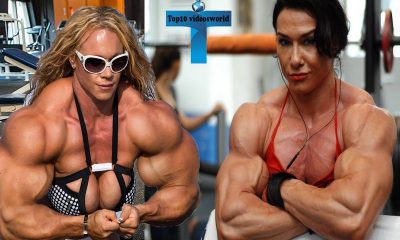



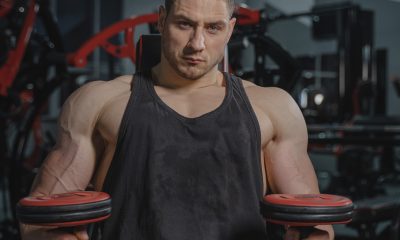




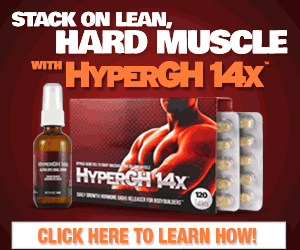
 Click here to buy 1-Test Cyp/DHB 100 by Dragon Pharma
Click here to buy 1-Test Cyp/DHB 100 by Dragon Pharma









